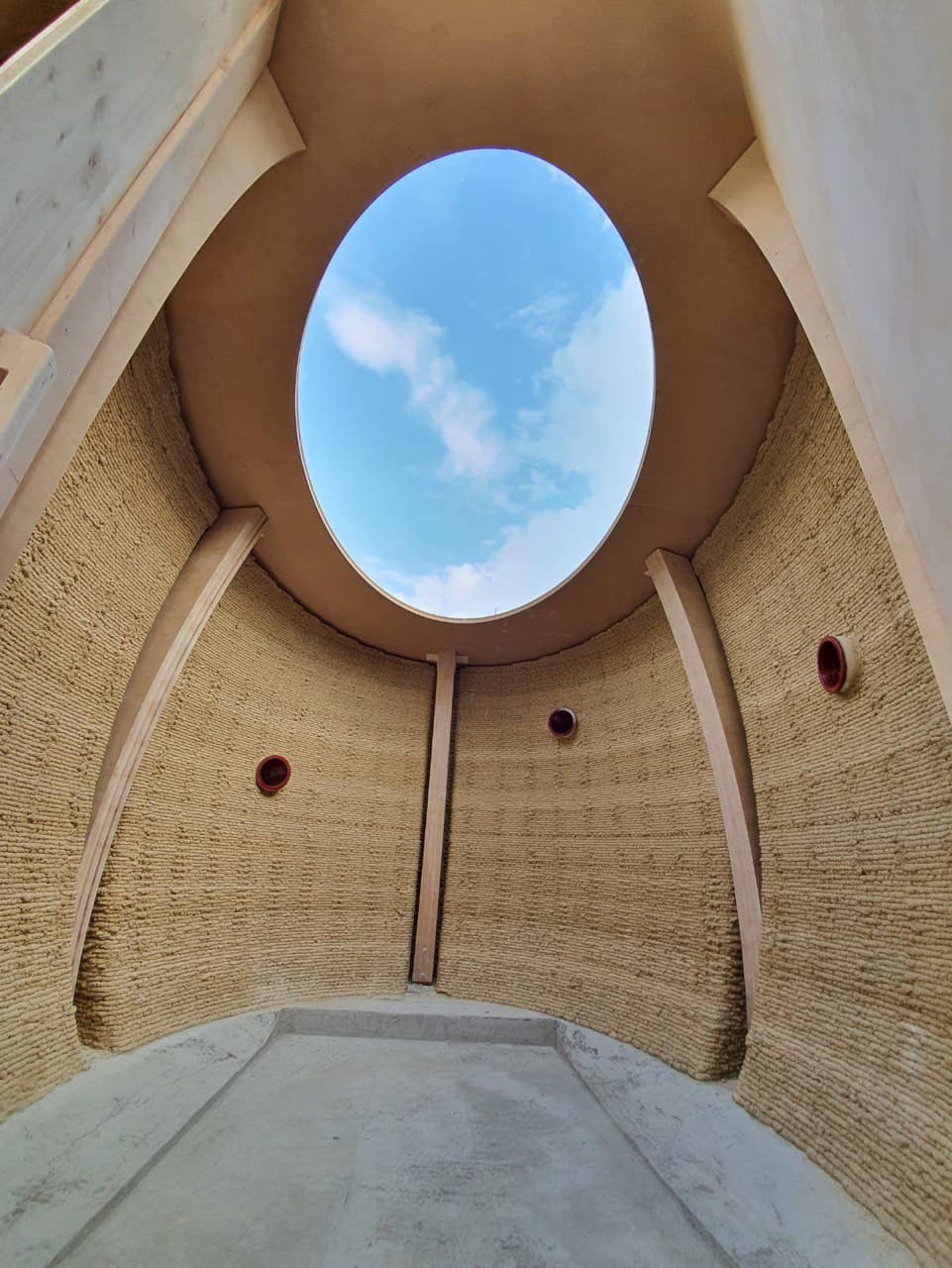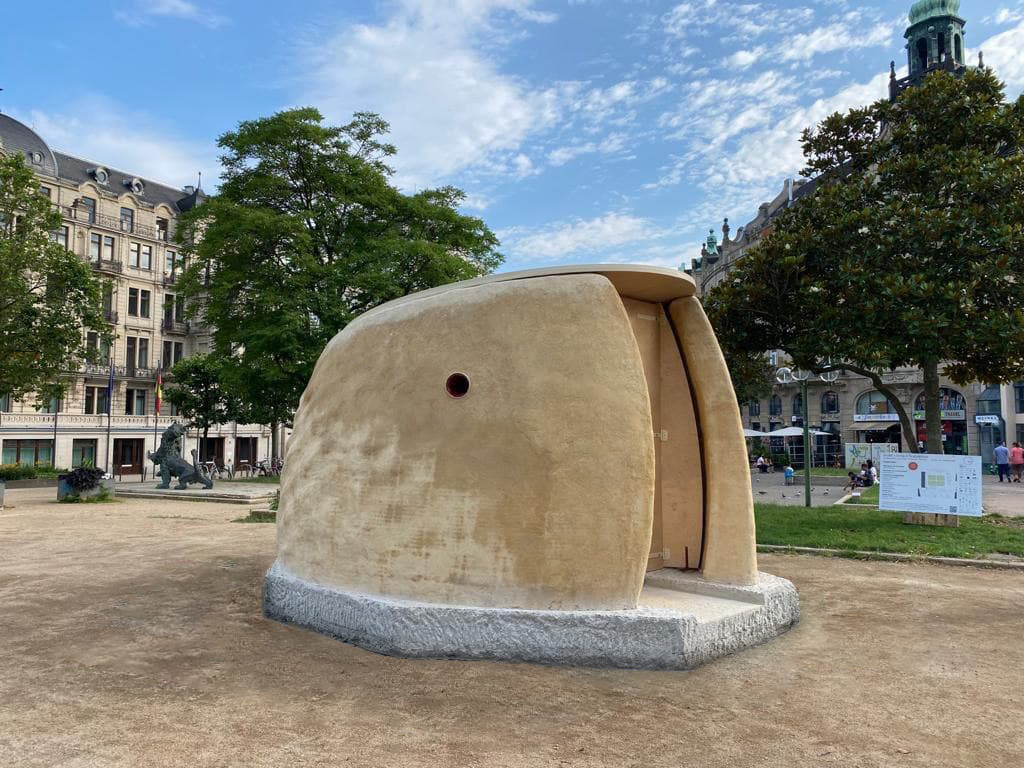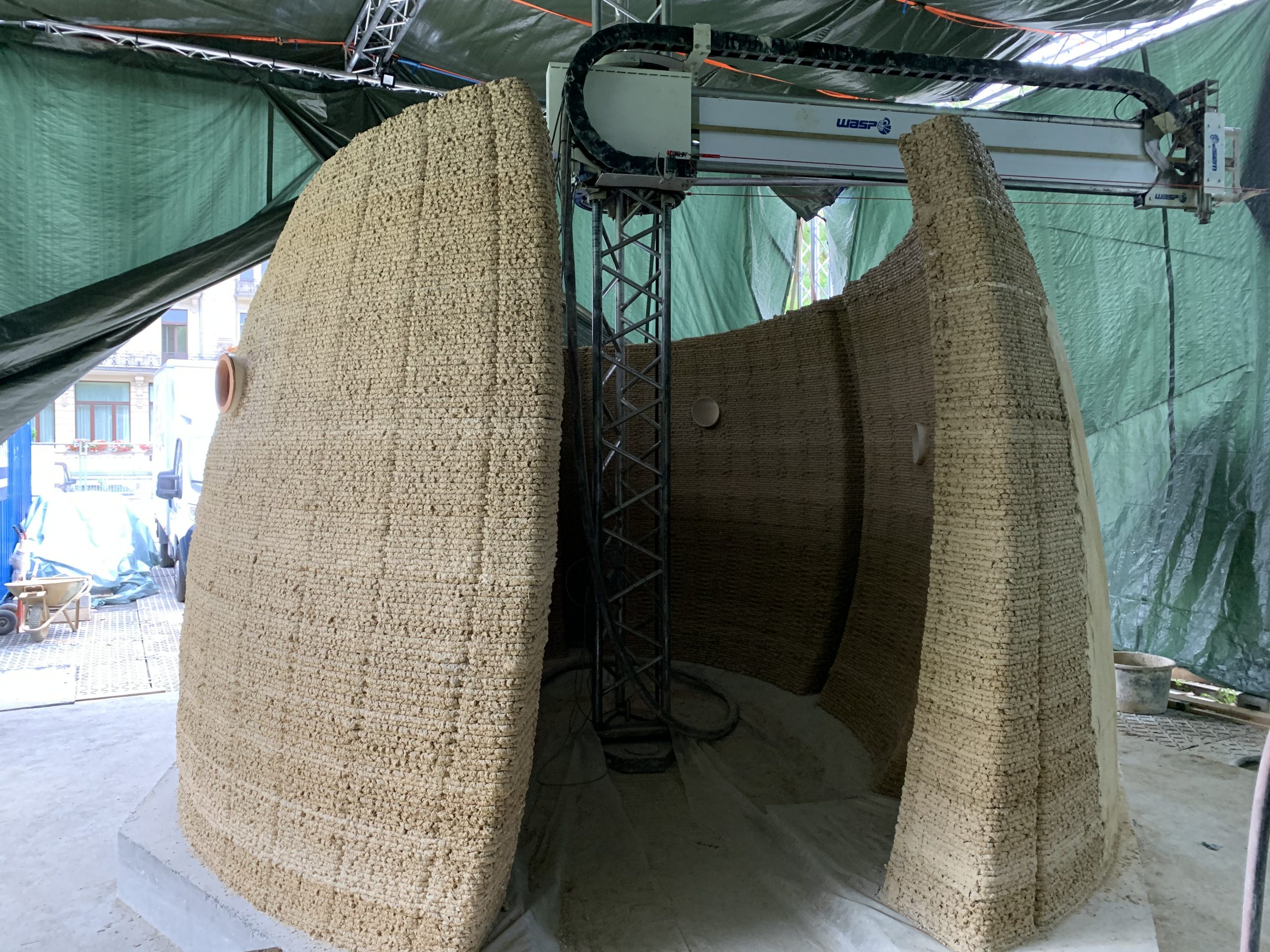Italian 3D printer manufacturer WASP has completed the printing phase of what it claims is the “first and only” temporary, livable and sustainable sculpture entirely 3D printed with natural materials.
Called “The House of Dust”, the 3D printed sculpture was built by WASP in partnership with the Museum Wiesbaden and artist Alison Knowles, a pioneer of the Fluxus movement – an avant-garde art movement that emerged in the late 1950s synonymous with the gradual transition between art and life.
Knowles turned to WASP to produce a sustainable livable iteration of “The House of Dust” inspired by her computerized poem of the same name written in 1967, the latest in a series of subsequently built structures and one that is based on circular economy principles.
“Developing processes to give a home as a birthright for every man is a responsibility of the most advanced societies,” said Massimo Moretti, Founder of WASP. “The humblest materials, the waste from the agro-food chain and the raw earth deposited by a machine at the point and in the quantity proportionate to transform the shapeless matter at house is the process that WASP is developing. Living in a sculpture is the crystallization of the process.”
“The House of Dust”
The concept behind the 3D printed sculpture lies in Knowles’ computerized poem, which she created using a Siemens 4004 computer in Fortran language and which was supposedly the first example of computer-generated poem. The poem was formed from strophes created by working through iterations of verses with words changing from a finite word list.
According to Knowles, this computerized form of poetry highlighted the “underlying arbitrariness” of language and showed how words can acquire different meanings through structural relationships and shifting contexts. The poem was translated into a physical structure in Chelsea, New York, in 1968, and now Knowles has chosen WASP to bring her poem to life once more, this time via the medium of 3D printing.

“The House of Dust” was 3D printed in just 50 hours using WASP’s Crane WASP 3D printer. The sculpture is made up of 165 layers of 15 mm and used 15km of extruded material, of which eight meters is natural materials. The total surface of the sculpture is 16 square meters and reaches a total height of 2.5 meters.
Built with sustainable materials, “The House of Dust” is designed to represent the “synthesis of technological advancement in the dialogue between man and technology”, as well as between man and new ways of living. The artwork is one of 10 temporary livable sculptures by international artists housed in the Frankfurt/Rhine-Main metropolitan region until September 26th. The sculpture can be seen in Frankfurt, Darmstadt and Wiesbaden during this time, and visitors can even book to stay overnight within the sculpture.

WASP’s circular economy 3D printing past
Wasp was founded by Moretti in 2012 with the goal of developing viable construction processes based on the principles of the circular economy. Over the last few years, the firm has designed and completed several construction projects with a focus on sustainability, several of which it claims have been “world firsts”.
The company has previously used its Crane WASP 3D printer to successfully build a small eco house for its Shamballa project – an eco-friendly technological village in Italy built using resourceful additive manufacturing. The building, called Gaia, was printed with raw soil from the surrounding area as well as natural waste materials such as vegetable fibers. In October last year, WASP partnered with the Rossana Orlandi gallery in Milan to showcase the project as part of the gallery’s “We Are Nature” event.
Leveraging the success of the Gaia project, WASP began planning another eco-friendly housing model to be printed entirely from local earth, called TECLA, which it officially completed and installed earlier this year. TECLA is designed to be completely carbon-neutral and adaptable to any climate, having been printed using entirely recyclable materials. The building was developed in response to the growing global climate emergency and need for sustainable homes in preparation for natural disasters.

Nominations for the 2021 3D Printing Industry Awards are now open, have your say who is leading the industry now.
Subscribe to the 3D Printing Industry newsletter for the latest news in additive manufacturing. You can also stay connected by following us on Twitter and liking us on Facebook.
Looking for a career in additive manufacturing? Visit 3D Printing Jobs for a selection of roles in the industry.
Subscribe to our YouTube channel for the latest 3D printing video shorts, reviews and webinar replays.
Featured image shows inside the 3D printed “House of Dust”. Photo via WASP.


